The attractive Yucca has graduated to weed status within the disorder of weedom.
This fine pair of specimens settled in among all the other weeds and tiny trees which dominate the patch south of our greenhouse. They enjoy a windbreak and partial shade conditions, so their stalks tend to stay upright throughout the blooming period. Hiding behind them is an ever expanding stand of marshmallow, a most versatile herb which which has likewise attained weed status by usurping previous garden space.
Since we planted the first yucca in our landscape, we’re ultimately responsible for the rest of them :-D which spread by seed to several new locations. It’s impossible to remove them, because we like our weeds, and because the attractive blooms are edible. They look great in a weed salad. This one features lamb’s quarters, smart weed, violet leaves, baby plantain leaves, a little bit of ground ivy, red clover, a little thyme and yucca blooms. It was mild and pleasantly palatable, even without dressing.
There are about 50 or so species of Yucca (family: Asparagaceae) in the Americas and plenty more varieties. For example, our species, Yucca filamentosa, common yucca, has numerous available varieties with myriad patterns of colored foliage and is known by such interesting appellations such as Adam’s needle, color guard, etc. A similar but smaller plant with narrower leaves, Yucca glauca (soap weed or great plains yucca), is likewise edible, as is Yucca flaccida. Yucca baccata, a southwestern species is eaten by Ellen, the Wild Food Girl, who suggests that the flowers of many, if not all of the species are edible. She favors the entire bloom, as we do at weedom, but a few other foragers caution to stick with petals only, reporting the reproductive parts to be bitter or diarrhea inducing. Sam Thayer and Deane Jordan appear to be more sensitive to the inner floral parts than we (who consumed the entire salad pictured above in its raw state). One could blame an excess of saponins for the possible belly ache or purgative effect of an overdose, but yucca blooms, buds, young fruit of some species, and flowering stems have all been part of basic cuisine in various cultures.
Perhaps taste the petals first, then perhaps the inner floral parts if you wish to take on this new food. Cooking (boiling or stir frying) appears to mitigate the sensitivities that some have to the inner floral parts, thereby permitting them to eat more. Sam Thayer finds the peeled young flowering stems to be edible, cooked like a giant asparagus. The leaves are so fibrous that you won’t be tempted to eat them, but perhaps employ them for basket weaving as has been done by various indigenous peoples.
The part of this plant not to eat is the root! It doesn’t matter if you’ve seen “Yucca root” sold in the specialty or ethnic grocery stores. That’s from another, totally unrelated plant, cassava, or manioc, a.k.a. “Yuca” with only one c, and pronounced “yooka”. The common misspelling has caused a lot of confusion, which we’re happy to straighten out here. The root of our true Yucca weed has a lot of saponins, enough for you to make some suds, and use it to clean things. It’s a shampoo ingredient, and found in various skin products. So the root might be more appropriate for soap enemas rather than food, but we don’t recommend either.
Yuccas of weedom are of varying heights, with the ones catching all the north wind being the shortest. Those which are out of the wind have greenery reaching 2 plus feet (0.7 meter) high, and the flowering stems reach over 6 feet (2 meters) in height, with the blooms beginning above the top of the leaves. In cross section, the sides of the leaves curl upward. When the weather is dryest, fibrous tendrils curl up along the sides of the leaves. Each swordlike leaf emerges directly from the center, and is about an inch or more wide, ending in a sharp tip. In May, a thick stem emerges from each mature rosette, and by late in the month, blooms appear along numerous horizontal branches forming a huge panicle. The bell shaped blooms may persist for 2-4 weeks depending on weather. (At weedom, the wind can take them out). In most years, a minority of the flowers produce green fruits which are about 2-3 inches (5-8 cm) long and are crimped in the middle. Each fruit has 3 segments in which black seeds form, and are exposed as the fruit dries and turns brown to almost black in the fall.
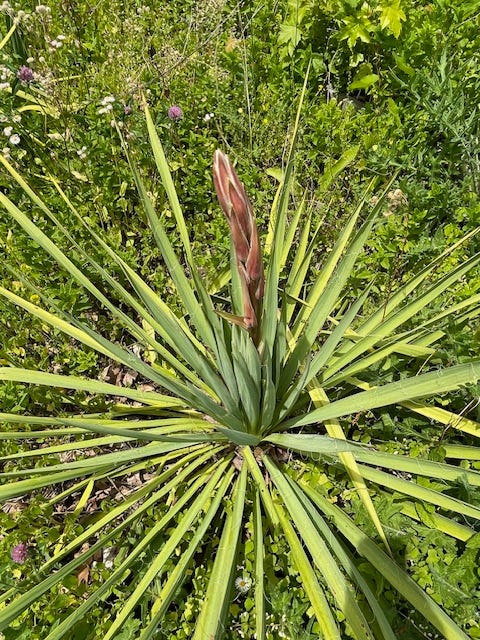
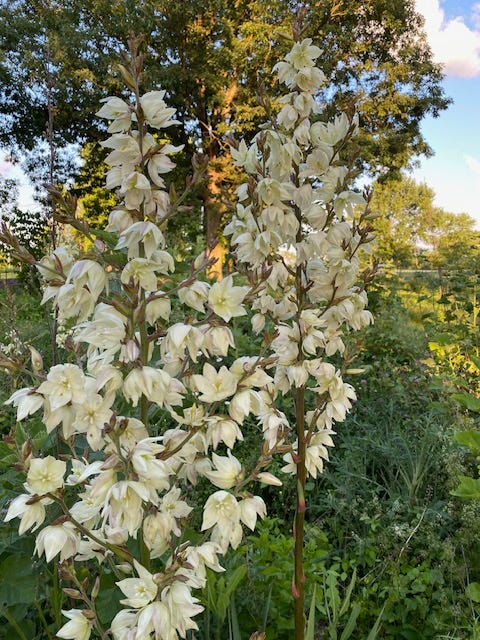
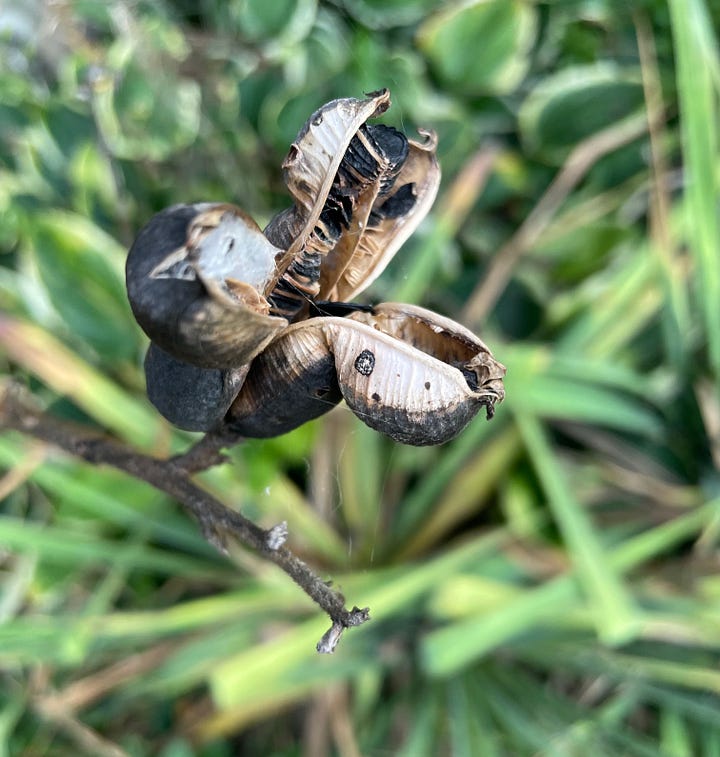
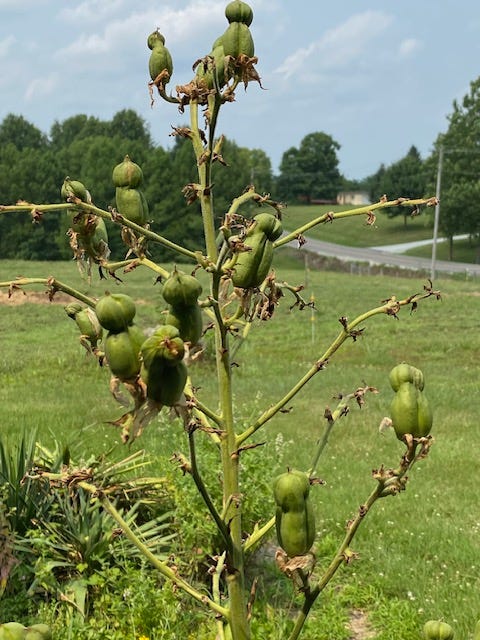
The blooming stems on our yuccas vary quite a bit in character based on the amount of rain. Last year most of the stems were shorter and thinner than usual due to very dry spring. This year they’re quite a bit more substantial, with numerous blooms. It’s been good eating, and we shared some at the farmers’ market. Each flower has 6 petals/sepals, called tepals, and 6 inward curving male anthers. In the center is a thick tripartite female structure, which if sufficient moth or bug activity allows, will be pollinated and produce a seed pod. This probably occurs 5 percent or less of the time. Many sources claim that only the yucca moth (Tegiticula species) activity will allow the fertilization process. We are seeing pods and seeds, but have yet to see one of those particular moths. Plenty of other bugs wander around in those blooms though, including copious ants. In some areas, the yucca blooms attract hummingbirds, (but ours seem to like the jewelweed flowers more than any other).
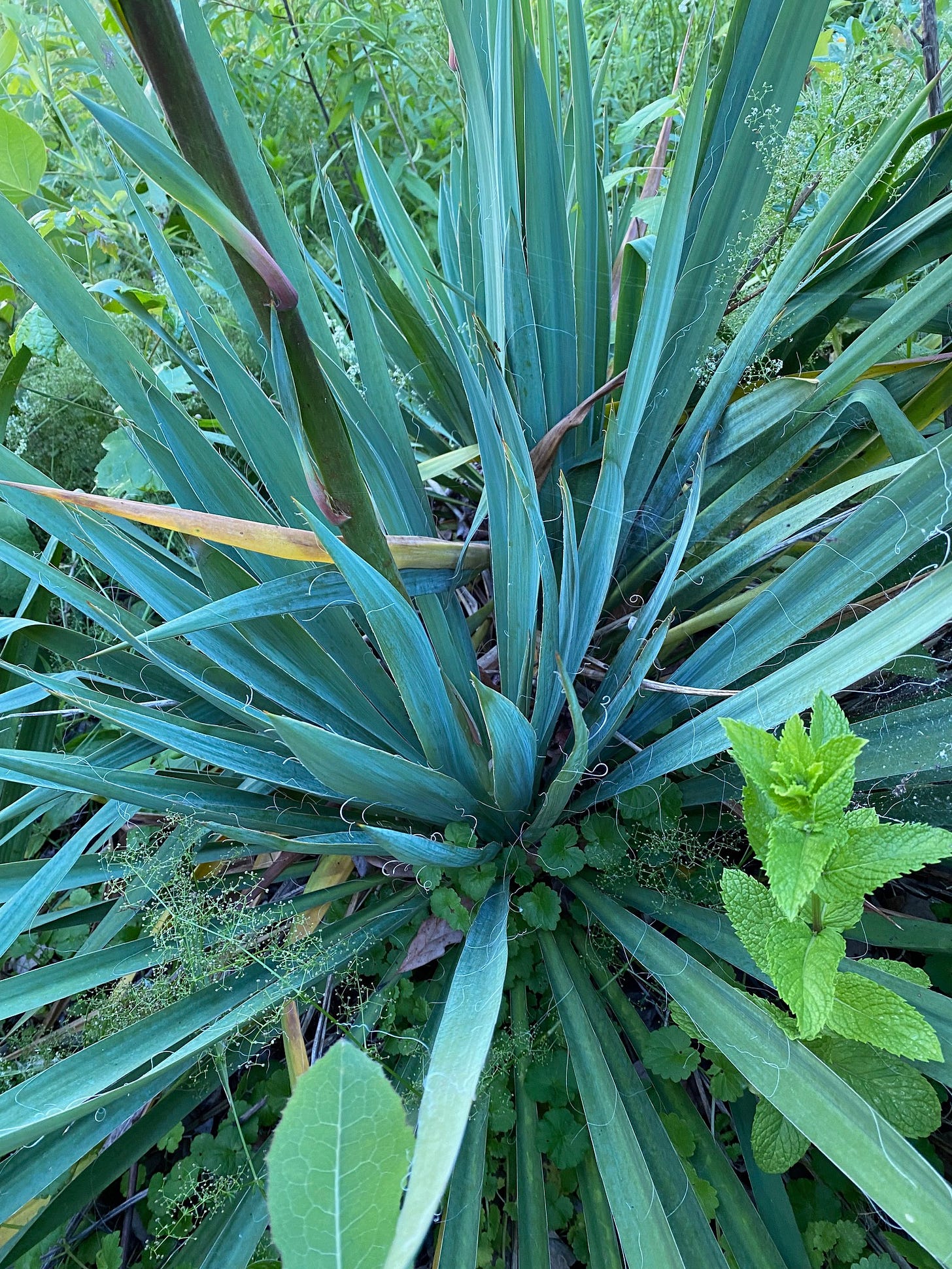
Yucca is a commercial source of saponins used in the food and beverage industry, skin care and nutritional supplements. Antimicrobial, antifungal, antiproliferative, anti-inflammatory, antiplatelet and antioxidant activities have been found among the plants in this genus. The main commercial crop from which the active compounds are sourced is Yucca schidigera, the Mojave yucca. Yucca extracts from this plant have been used as veterinary anti-inflammatories, to treat arthritis, migraines, colitis, hypercholesterolemia, etc. Root extracts have been used as pet food additives to enhance flavor, and in animal feed to control the odor of feces. Since the array of saponins (hundreds) is not constant among the yucca species, we unfortunately can’t ascribe all the medicinal benefits of the mojave yucca to our local weed. However, we know that the blooms of the Yucca filamentosa taste great, very mild, (like a fancy mild lettuce) and have pleasant crispness. They work well with tempura batter if you’re in the mood to fry them. Stir frying the blooms in a very mild oil with sweet onions works well. Maybe add something like sliced fennel (the vegetable) to the mix. Floating them in your drinks will add an elegant touch. We have found that our yucca blooms last about a week in the refrigerator if they’re sealed up in a container, which allows some advance planning. While you’re accumulating blossoms, perhaps check out a recipe for stuffed yucca blossoms from The Backyard Forager.
Grazing on our yucca blooms has become a regular practice each spring, but we have not eaten the flowering stems of this plant. The main reason is that we don’t have a whole lot of them yet, and we want those flowers. If you have access to a lot of plants, there are some ways to use the shoots. It’s most important to get them when they’re young enough to snap off, like asparagus. The Gardenista has some advice for using the seed pod and recipes for the flowering stems.
We hope you can find some Yucca plants. Even if you don’t eat them, or extract the roots for medicine, they look great.
Here’s another special weed to show our special appreciation for those who journey with us all the way through the botany and the chemistry.
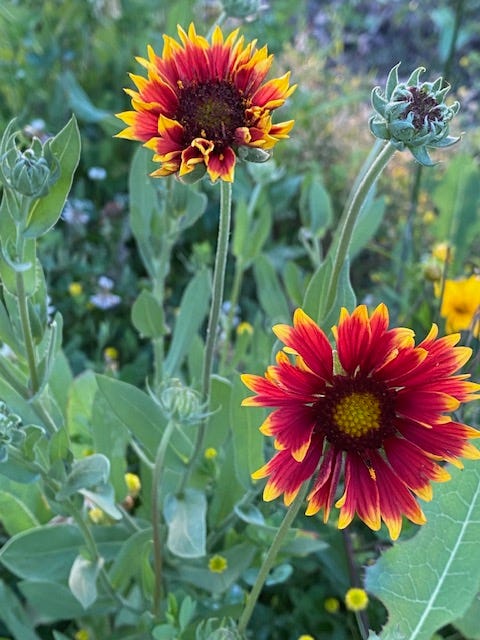
It’s very likely that we’ll disappear for a week or 2, since another baby is due to arrive. By that time, the marshmallow and elecampane will start blooming, and we’ll be back to show you. Plus, we’ve never seen more blackberries next to the garden.
Let us know which types of Yucca grow near you, and if you’re making use of them.





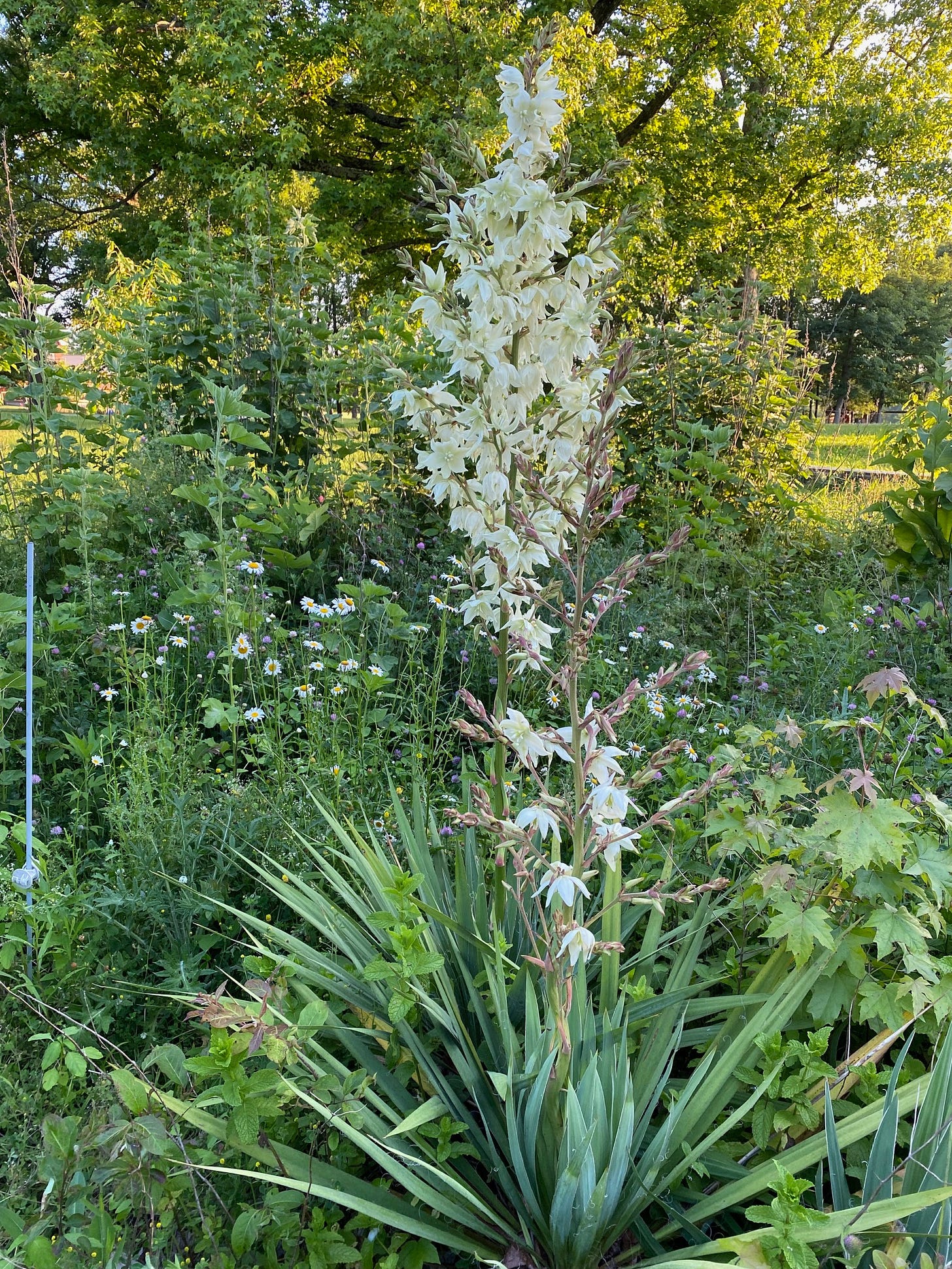
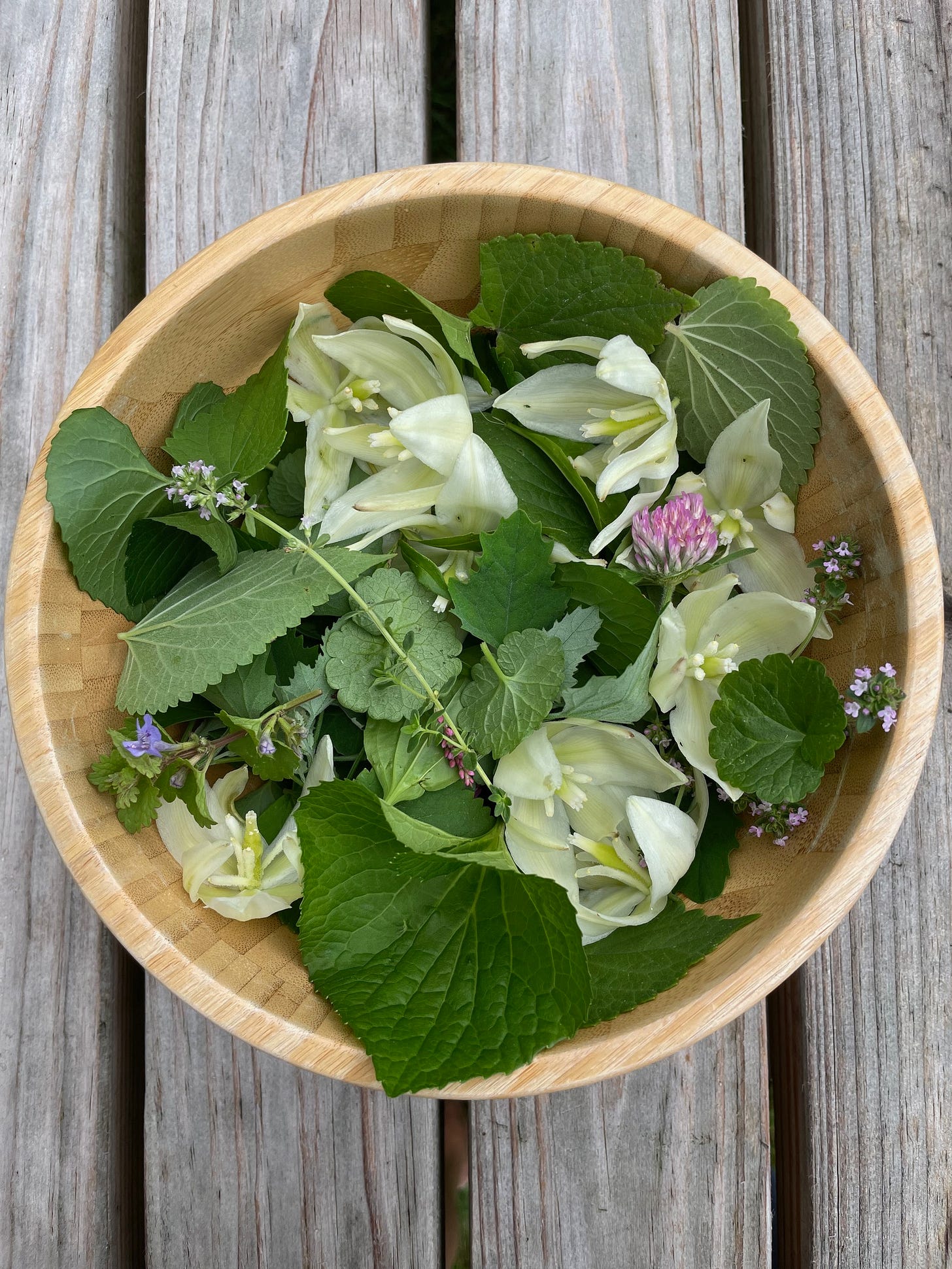
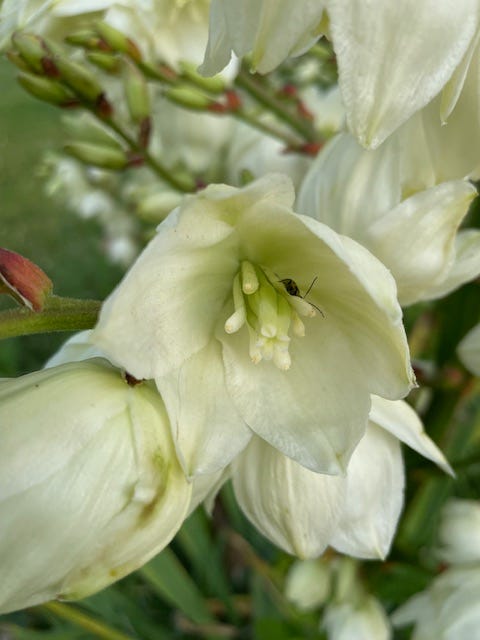


Such a beautiful plant. Shared to tumblr
A "weed" we have here across the pond too. We tolerate them as they are good for ground cover and look spectacular. I would never have thought of eating them.